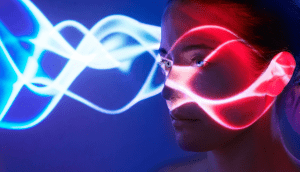Hey there, Sound foloweres! Have you ever found yourself completely lost in a video game or a virtual reality (VR) experience? Felt like you were actually in the game, dodging bullets, exploring alien landscapes, or jamming at a virtual concert? If you have, then you’ve experienced the magic of immersive audio. Today, we’re going to dive into how audio spatialization technology is revolutionizing the world of virtual and augmented reality (AR). So, strap on your VR headsets and crank up the volume, because we’re about to embark on a sonic adventure!
The Symphony of Immersion
Let’s start with a simple question: What makes an experience immersive? Is it the stunning visuals? The interactive gameplay? While these elements are certainly important, there’s another key ingredient that often gets overlooked – sound.
Imagine playing a arcade game without the eerie background music, or a racing game without the roar of the engines. It just wouldn’t be the same, right? Sound adds depth and realism to our virtual experiences. It makes us feel like we’re not just observing a different world, but actually living in it.
The Evolution of Audio Spatialization
Now, let’s talk about audio spatialization. In the early days of gaming and VR, we had mono and stereo sound. These systems could make sounds louder or softer, or pan them from left to right, but they couldn’t create a fully immersive soundscape.
Enter audio spatialization technology. This tech allows us to hear sounds from all around us – front, back, above, and below. It’s like being surrounded by a sphere of sound. This is what gives us the feeling of being “inside” the game or the virtual world.
The Impact on VR and AR Applications
So, how does this tech contribute to VR and AR applications? Well, in a word, it’s a game-changer.
Imagine you’re playing a VR game where you’re exploring a haunted mansion. With spatial audio, you can hear the creaking floorboards behind you, the distant howl of a wolf, or the sudden whisper in your ear. It makes the experience so much more realistic and terrifying!
Or consider an AR app that lets you tour a historical site. As you point your device at different landmarks, you hear the sounds associated with them – the clash of swords at a medieval castle, the hustle and bustle of a Roman market, or the solemn prayers at an ancient temple. It’s like having a time machine in your pocket!
Final Thoughts
In the end, audio spatialization technology is not just about making sounds more realistic. It’s about creating immersive experiences that engage our senses, stir our emotions, and transport us to different worlds. It’s about turning up the volume on our virtual adventures. And let me tell you, it sounds like the future is going to be a blast! So, keep those ears open and stay tuned for the next sonic revolution in VR and AR!
References
Don’t worry, we didn’t just make all this up! If you’re interested in diving deeper into the science of music and the brain, check out these awesome studies and articles we used to write this article. Trust me, they’re worth a read!







